Montague Alfred (Monty) Noble
28 January 1873 - 22 June 1940
Australian test cricketer, captain, selector and journalist
Monty Noble is remembered as one of Australian Cricket’s greatest captains, finest all-rounders and recognised as one of the great authorities on the game. Associated with the Paddington Cricket Club for more than 30 years, Noble was also a keen baseball player, member of Paddington Baseball Club and a trustee of the Sydney Cricket Ground.
Inage: Cricket coach Mr Monty Noble wearing a baggy green, New South Wales, ca. 1930s. Image: Fairfax Corporation, National Library of Australia nla.obj-162104352
Plaque location
Trumper Park, cnr Glenmore Road and Hampden Street, Paddington.
View all plaques in Paddington
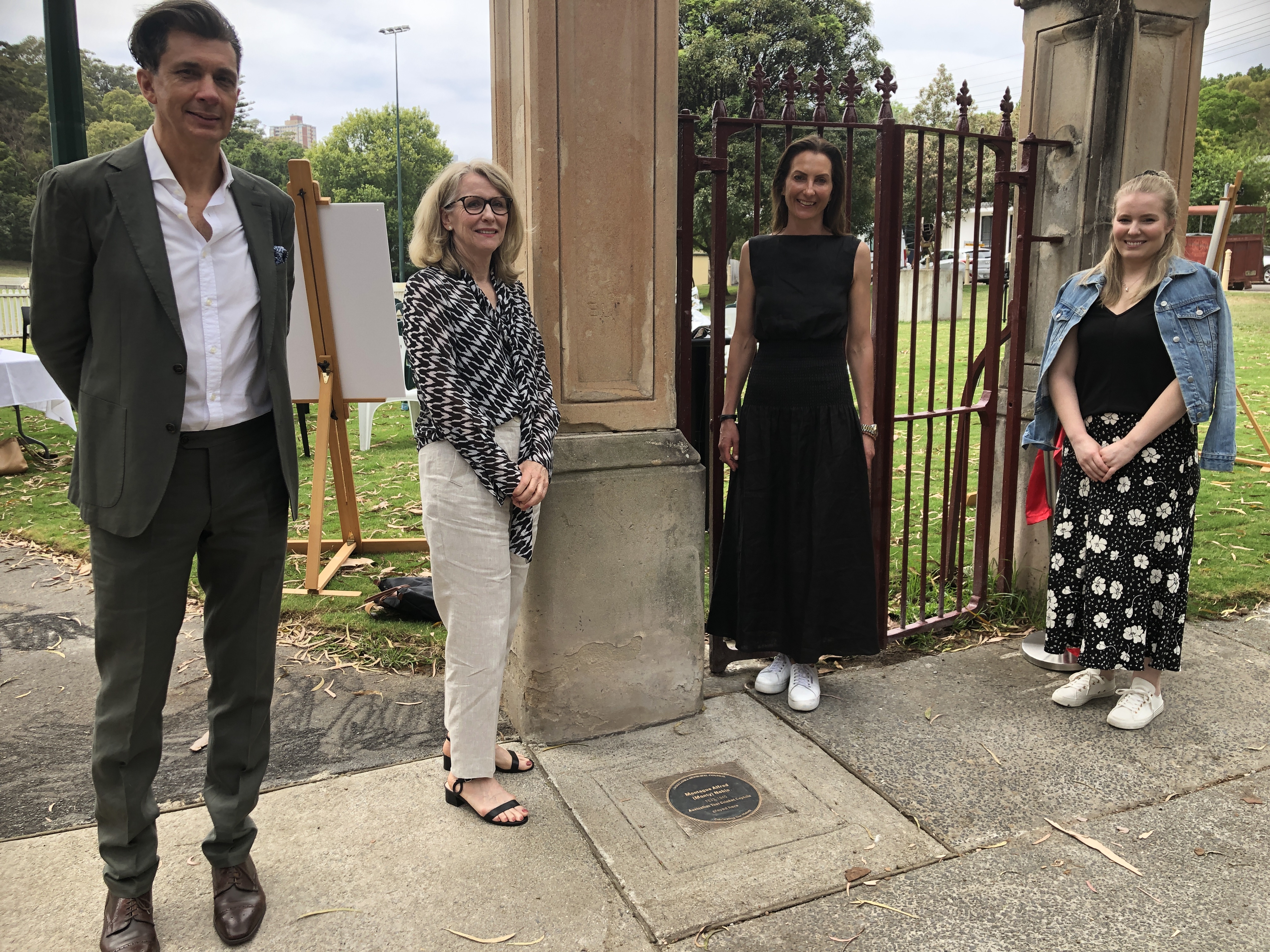
A plaque commemorating Monty Noble was unveiled on 27 November 2020 at Trumper Park Oval, where the Paddington Cricket Club was formerly based.
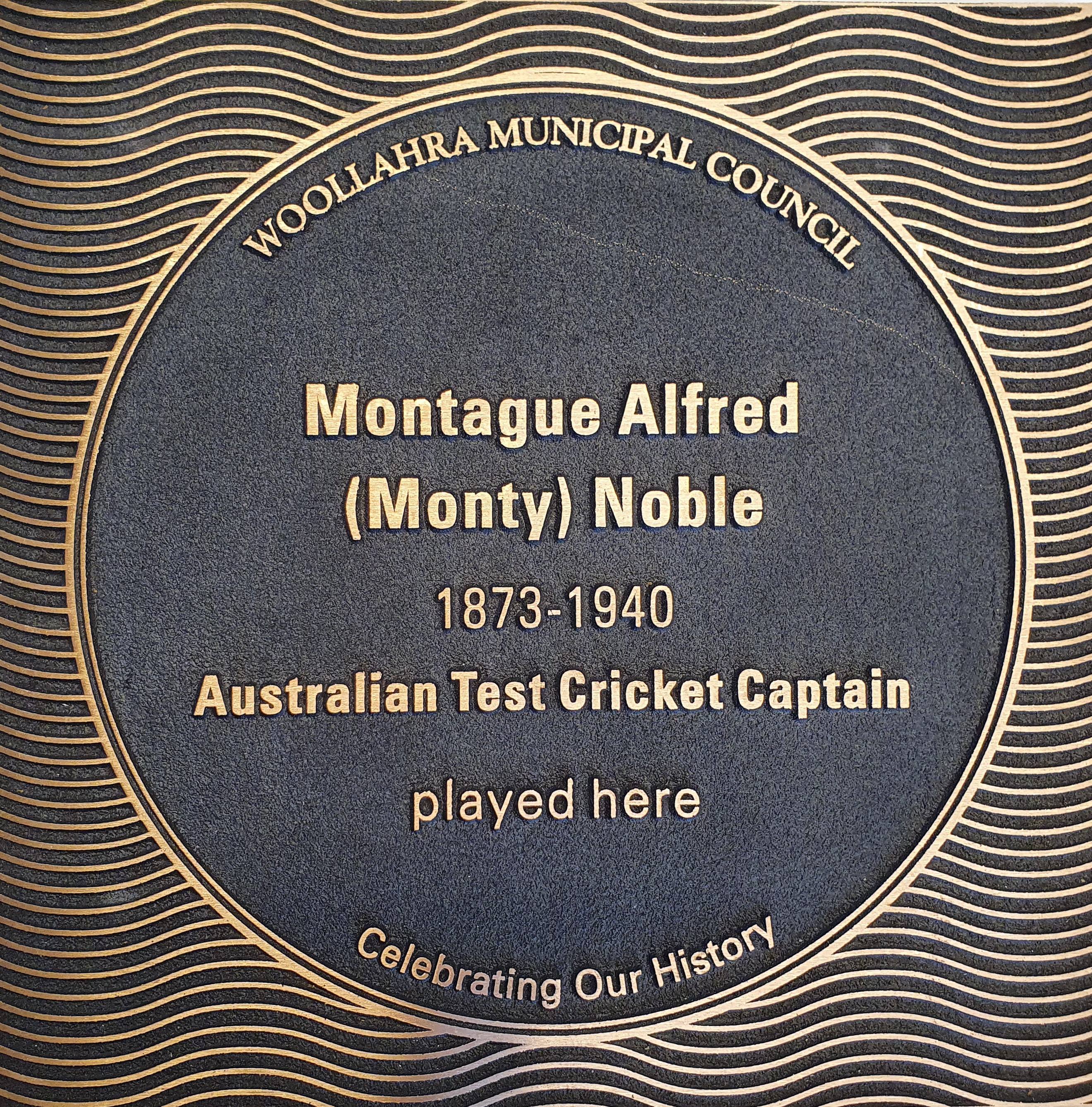
Watch the plaque unveiling video
Gallery
Montague Alfred Noble was born on 28 January 1873 in Sydney, the eighth and youngest son of Joseph Noble and his wife Maria, née Collinsi who were married at St Stephens Church, Camperdown in 1859ii. Montague was baptised at St Andrews Cathedral on March 29, 1873.iii
By the 1870s the family were living near Haymarket in the City of Sydney – a newspaper announcement of Montague’s birth gave their address as ‘Mill (later Little Hay Street) and Dixon Street’. According to his official biographer, Montague’s father worked as a grocer and later a builderiv - Joseph Noble, grocer, is listed in the Sands directory of 1873 at the Mill Street address and possibly followed his own father’s occupation, as Joseph Noble is subsequently listed as a builder operating from Little Hay Street. By 1884 the family had moved away from the area - a Joseph Noble, builder, was operating a business with an address in Concord, and Mrs M Noble is listed in Sands directories as the occupant at 307 Crown Street, Surry Hills.v By 1893 Mrs M Noble has moved to Paddington and is listed as an occupant at 41 Cambridge Street, Paddington where she remains from 1893 to 1903, along with her sons E G Noble (1900) and M A Noble (1902), as well as C H Collins (possibly a family member). Some sources suggest that Joseph Noble was at one time a licensee in Paddington.
Older brothers Harry (Rev Henry John) Noble and Ted (Edward G) Noble, both accomplished cricketers themselves, are credited with encouraging the young Montague to play cricket. Rev H J Noble’s obituary states that he had taught his youngest brother Mr M A Noble to play cricketvi. Ted, who represented NSW against New Zealand in 1894vii playing alongside his youngest brother, is said to have kept Montague on the cricket path, when he might have been tempted to pursue an alternative sporting career due to ‘a love for the open boat’.viii
Montague was known to have been a keen bell-ringer at St Marks Church, Darling Point and to have taken an interest in bell-ringing on his tours of England. He was also said to have a splendid singing voice, appearing as a basso (bass) in a concert at St Marks Church, Darling Point for Christmas 1893 directed by his brother Mr Henry Noble, who was organist at the church.ix
Montague was educated at Crown Street Public School, and on leaving school became a bank officer. Finding that his employers were not fully sympathetic to the demands of a burgeoning cricket career, he went on to train as a dentist under Henry Peach, ‘confident as ever that he could pass his exams between matches’x. He qualified in 1901.
On January 22, 1914, Montague Noble married Elizabeth Ellen Ferguson at St Phillips, Church Hill, Sydney. They had four children: Joan, Maurice, Nona and Rodney. He had met Elizabeth through one of his patients, Elizabeth’s brother William.
Cricket
Noble first came to prominence in the 1894-5 season, aged 22, when he played in a Juniors team against the A E Stoddart’s English XI - the same match that brought a 17-year-old Victor Trumper to the fore. In the match played in Sydney in 1894, Noble made 152 not out against the English bowlers.
E H M Baillie, cricket journalist with the Sporting Globe, writing after Noble’s death in 1940, described Noble's game:
“While Noble was a stylist as a batsman, he was one of the steady rather than the dashing types and was accomplished in every branch of the art. As a medium-pace off-spin bowler he was always difficult and was one of the first to cultivate the swerve which has been the stock-in-trade of many great bowlers since his time. At the height of his powers he ranked as almost the best bowler of his type in the world.”xi
Noble first represented Australia in the second test against England in 1898 at Melbourne, where he took 6 wickets for 49 runs in the second innings. He toured England four times, in 1899, 1902, 1905, captaining Australia in the 1909 tour, when he retained the Ashes for Australia.
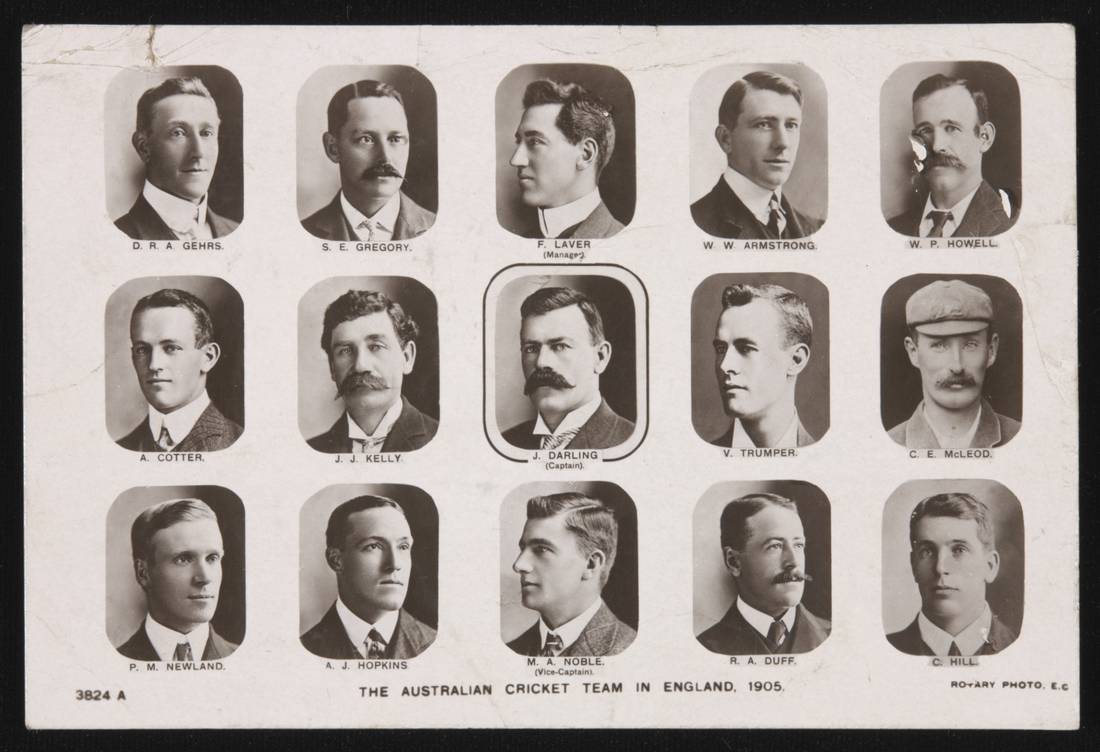
Photographic postcard of The Australian Cricket Team in England, 1905. The Rotary Photographic Company Ltd. National Museum of Australia 152435
“Under Noble's lead, Australia had lost the 1903-04 series to P F Warner's side, but recovered The Ashes with a triumph over the touring team captained by A O Jones, and maintained the supremacy in 1909, when Noble, captain of Australia for the third time, proved himself a courageous and enterprising commander by his control of the side” Wisden’s Obituaryxii
He also captained Australia in the test series of 1903-4 and 1907-8 which were played in his home country. Noble went on to deliver many ‘stupendous’ performances, gaining the reputation as one of Australia’s finest all-rounders.
“..he is one of the few Australian batsman to have made more than 10,000 runs in first class cricket, his total being about 14,000. He is one of the only three men who have accomplished the double [1000 runs and 100 wickets] in Tests against England – 1905 runs at 30 an innings, and 115 wickets at 24 runs each” Baillie, E H M, Sporting Globe June 26, 1940.
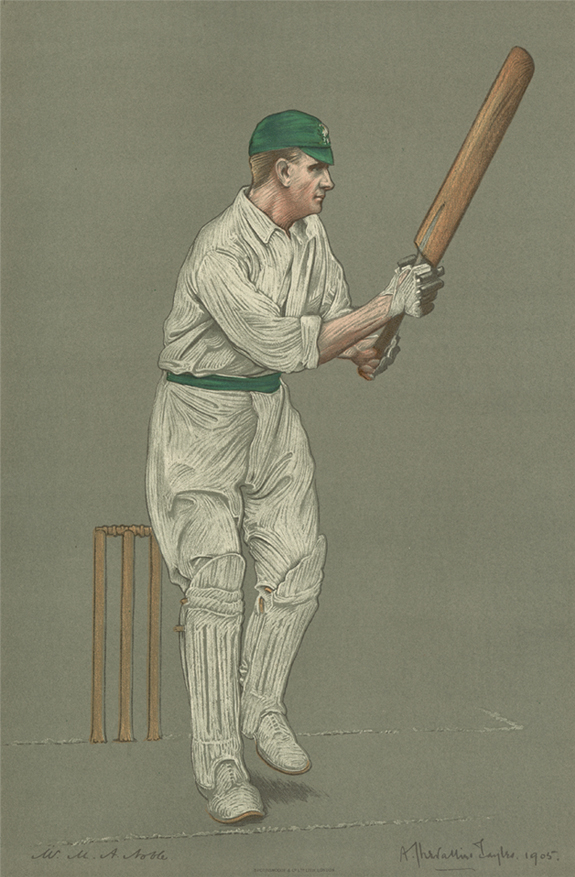
Mr M A Noble, by A Chevallier Tayler, from the series The Empire's Cricketers, 1905. Image courtesy of Ken Piesse and cricketbooks.com.au.
During his career in first class cricket Monty Noble made 37 centuries (although only one of these was in test cricket when he made 133 at Sydney in 1903-04) and took a total of 654 wickets. In his long Sheffield Shield career for NSW, his average of 69.38 for 4996 runs remained unequalled until the advent of W H Ponsford and (Sir) Donald Bradman.
Variously known as Alf or Monty, he was also referred to as Mary Ann (from his initials), the latter being a crowd favourite. A sound and inspiring leader, ‘Mr Noble’ (as he was addressed by the younger members of the teams he captained) was regarded as one of Australia’s greatest captains and authorities on the game, being known as a master of tactics with a knowledge of every move in the game and a genius for picking out the weaknesses of opposing players and working on them – his “placing of the field was always masterly”.xiii Noble was credited with being “largely responsible for the mobile field, doing away with the old stereotypes placing of the men, and making the cutting off of runs his guiding principle”. During a lecture to the Moore Park cricket association in 1922, Noble said that ‘cricket taught men concentration, fair play, and honesty’.xiv
Noble was prominent in the controversies that arose between players and officials when the Australian Board of Cricket Control was formed in 1905, arguing for players' rights. He was briefly suspended from office and as a player by the NSW Cricket Association in 1906-07. In 1910, Monty Noble resigned from First Class cricket citing the need to devote his attention to his profession. The announcement “was received by the cricketing public throughout Australia with expression of great regret”.xv
A Trustee of the Sydney Cricket Ground, a life member of the NSW Cricket association and a selector for NSW, Noble was remembered by the M A Noble stand at the SCG, re-named in his honour in 1947, with the the unveiling of a plaque and dedication by the Governer-General (Mr McKell) on 26 February. The stand had been built in 1936 as a replacement for the former new Members' Pavilion. Along with the former Bradman and Messenger stands, the M A Noble stand was demolished in 2012 to make way for a major new stands development, now known as the M A Noble/Bradman/Dally Messenger Stands, which were completed in time for the 2014 Ashes series. The Noble Clock Tower façade, part of the former Noble stand, was retained as part of the new development. A brass portrait plaque of M A Noble is located in the new stand.
Noble later became a prominent writer and commentator on cricket, well regarded for his insight, and in which he “gave full vent to his analytical abilities”. He wrote detailed accounts of the England – Australia Test series in his books Gilligan's Men (1925), Those Ashes(1926) and The Fight for the Ashes (1929). In 1926 he published The Game's the Thing, a summation of his cricketing philosophy.
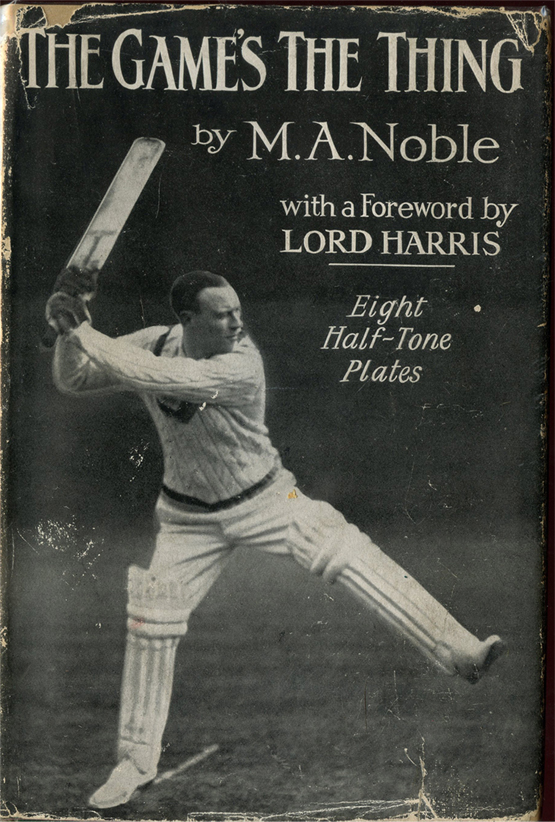
Dust jacket from The Game’s the Thing by M A Noble, published in 1926. Image courtesy of Ken Piesse and cricketbooks.com.au.
Paddington Cricket Club
Montague Noble had a long career with the Paddington Cricket Club (1894-5 to 1924-25), making 10,371 runs and five centuries, and taking 684 wickets at an average cost of 15.54 runs. In 1924, Paddington Cricket Club honoured M A Noble with a dinner to recognize his 30 year association with the Club as “captain and mentor”.xvi Speaking at the dinner held in the rooms of Sargent’s Limited, Mr W H Kelly, president of the Paddington Cricket Club said:
“No man has done more to advertise Australia throughout the world than M A Noble, and to him also belongs the credit of having helped to place cricket on the solid basis upon which it stands today. There is no finer Australian, no finer man, and indeed, no finer cricketer in the world than our friend, Noble”.
'M A Noble', The Daily Telegraph, 16 April, 1924.
In 1925, the Paddington Cricket Club joined with the Sydney Cricket Club, a forced amalgamation by the NSW Cricket Association – the combined club was named the Paddington District Cricket Club after heated debate with the reluctant Sydney club members. Monty Noble was elected as a committee member of the new club - addressing the gathering at the conclusion of the meeting he “asked them, as members of the new Paddington Club, to try and face the new situation without bearing any enmities. He was quite sure the new club was entering on a new era which would be beneficial and satisfactory for all concerned”.xvii
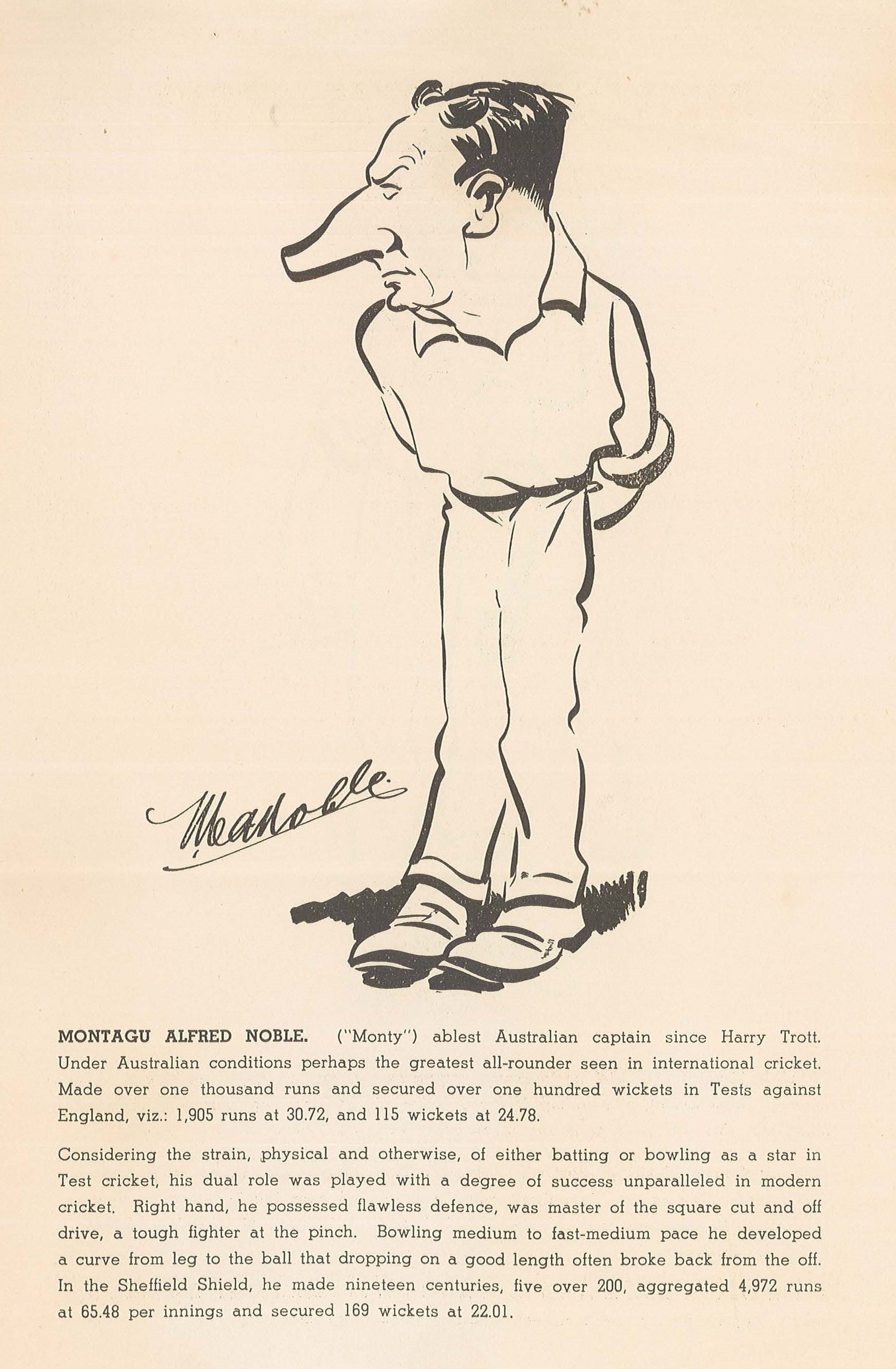
Caricature of M A Noble from Waverley District Cricket Club Testimonial Match Souvenir Booklet September 1939. M A Noble umpired the match. Source: Private Collection
Dentistry
Registered on 15 April 1901, Noble practised dentistry in the city. In 1902 he was honorary assistant dental surgeon at the Dental Hospital, Sydney. He was appointed president of the Dental Association of New South Wales in 1915 and served on the State's Dental Board from 1916-21.xviii
Baseball
Apart from cricket, Noble was a great baseball enthusiast, playing for New South Wales, where he served captain. He was president of the New South Wales Baseball Association and was made a member of the Baseball Australia Hall of Fame (2010).xix He was said to have learned his unique cricket bowling grip from American baseball players who toured Australia to boost their sport.
Awards
Wisden Cricketer of the Year 1900xx
Inducted Cricket Hall of Fame 2006 MCG
Inducted 2011 NSW Cricket Hall of Fame 2011 xxi
Montague Alfred Noble died on June 22, 1940, aged 67 and was buried at Randwick General Cemetery. He had been in poor health but his death was nevertheless unexpected. Mr McKell, M L A, chairman of the Sydney Cricket Ground Trust said that:
“The death of Mr Noble marks the passing of one of the greatest cricketers we ever knew” .
Moyes, A G The Sun 22 June, 1940.
Monty Noble is remembered as one of Australian Cricket’s greatest captains, one of the finest all-rounders and recognised as one of the great authorities on the game. Mr Justice Evatt, Vice-President of the NSW Cricket Association and patron of the Sydney Cricket Ground Members Association paid the following tribute after Noble’s death:
“Not only Australians, but cricket lovers throughout the Empire will feel a deep sense of loss at the death of Mr Noble. Even greater will be the grief of those who had the privilege of knowing him personally. Since his retirement from active cricket, many years ago, he has continued to help the game by his numerous writings and broadcast talks. His criticisms of the players were never unkind and he greatly helped to maintain and improve the standard of cricket in Australia.
As a representative of the members, he rendered valuable service on the Trust of the Sydney Cricket Ground, the ground which he loved so well, and on the field of which he enjoyed many triumphs.
But we shall remember him best as the great captain of the State and Australia, always leading his team with firmness and dignity and often rescuing it from the threat of disaster. It is the spirit of M A Noble which we need so much today.” xxii
The Sun 22 June 1940 p. 9
Originally Hampden Park, Trumper Park was built on reclaimed swamp - Glenmore Brook runs down and under its middle - and was officially opened in 1897. Hampden Park Oval was named in honour of Henry Robert Brand, Viscount Hampden, Governor of NSW from 1895 to 1899. Hampden Street, which adjoined the park, was originally named Ebenezer Street. Mr Noble, speaking at the dinner held in 1924 to commemorate his 30 year association with Paddington Cricket Club "paid tribute to the Paddington Council for the good work it had done in providing such a magnificent playing area as Hampden Park".xxiii First proposed by then Paddington Council in 1923, the name of the park was changed in 1931 to honour one of Paddington's cricketing heroes, Victor Trumper (1877-1915).
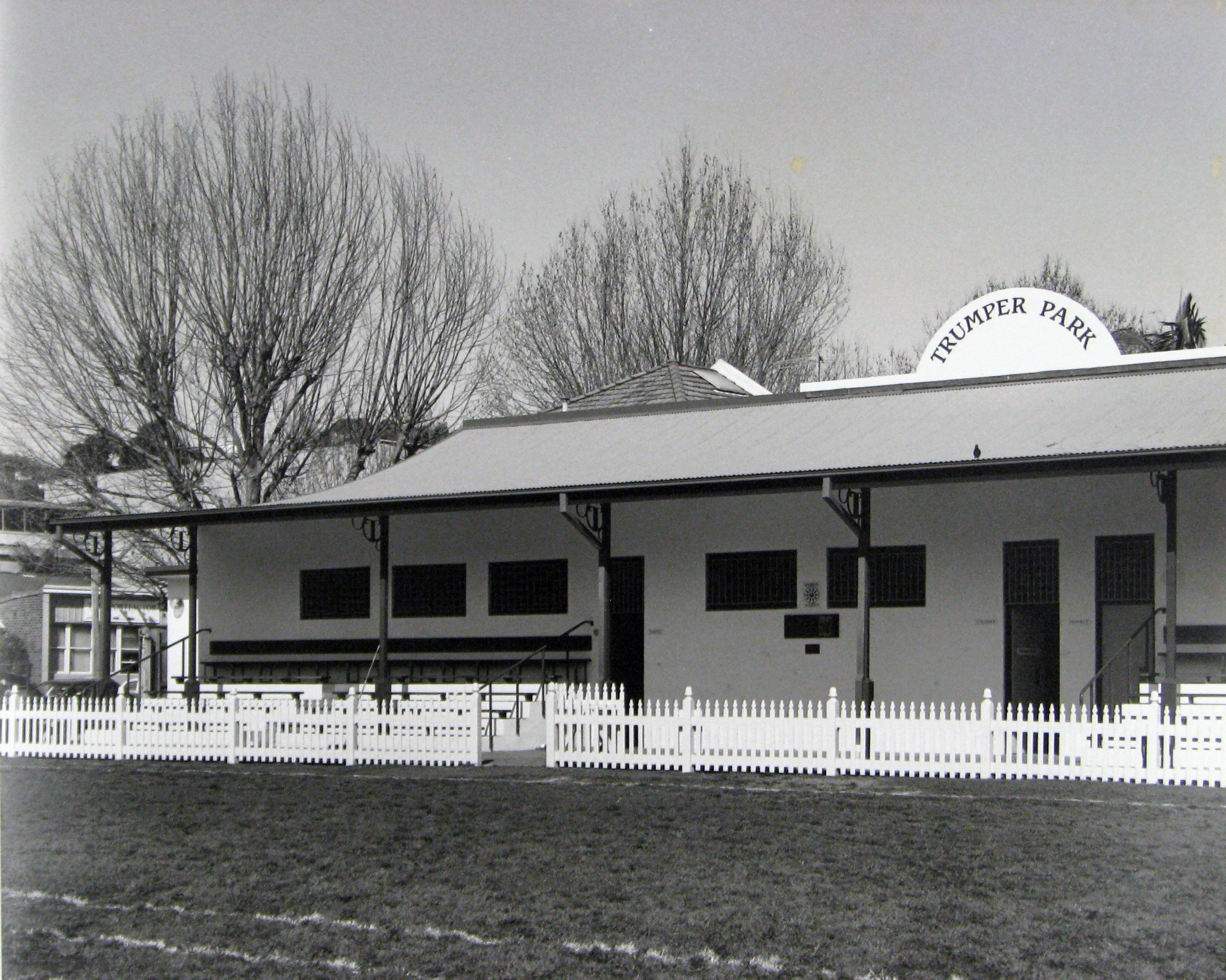
The pavilion at Trumper Park Oval 1993. Woollahra Libraries Digital Archive mm000280
Cable, K J 'Noble, Montague Alfred (Monty) (1873–1940)', Australian Dictionary of Biography, National Centre of Biography, Australian National University
Howat, Gerald M D ‘Noble, Montague Alfred (1873–1940), cricketer and dentist’. Oxford Dictionary of National Biography
'Noble, Montague Alfred (Monty) (1873–1940)', Obituaries Australia, National Centre of Biography, Australian National University
Who's Who in Australia 1933-1934
Pollard, Jack. Australian Cricket : the game and the players. Sydney, Hodder & Stoughton, 1982
Footnotes
i Howat, Gerald M D Noble, Montague Alfred. Oxford National Dictionary of Biography
ii Anglican Diocese of Sydney - Marriage Register. Anglican Church Diocese of Sydney Archives
iii Anglican Diocese of Sydney - Baptism Register. Anglican Church Diocese of Sydney Archives
iv Cable, K J Australian Dictionary of Biography
v Sands Directories 1873 – 1884
vi Rev H J Noble's Death
vii http://www.espncricinfo.com/series/17680/scorecard/861965/new-zealand-vs-new-south-wales-new-south-wales-tour-of-new-zealand-1893-94
viii Baillie, E H M ‘M A Noble Dies’ Sporting Globe 26.6.1940 p. 8 http://nla.gov.au/nla.news-article188808535
ix Withycome, Susan Mary Woolcock. Honourable engagement : St Mark’s Church, Darling Point : the first 150 years: History of St Marks p 67 Footnote 34
x Pollard, Jack
xi Baillie, E H M ‘M A Noble Dies’ Sporting Globe 26.6.1940 p. 8
xii Wisden Obituary: http://www.espncricinfo.com/wisdenalmanack/content/story/154798.html
xiii Baillie, E H M ‘M A Noble Dies’ Sporting Globe 26.6.1940 p. 8
xiv Play The Game, Evening News, 8.12.1922 p. 11
xv ‘Noble’s Retirement from Cricket’. Jan 22, 1910. The Bega Budget p. 3
xvi ‘Noble's Service’. The Sun, 15.4.1924 p. 5 http://nla.gov.au/nla.news-article223400383
xvii ‘New Cricket Club’ The Sun, 14.5.1925 p. 4 http://nla.gov.au/nla.news-article224037456
xviii Cable, K J Australian Dictionary of Biography
xix https://www.baseball-reference.com/bullpen/Baseball_Australia_Hall_of_Fame
xx http://www.espncricinfo.com/wisdenalmanack/content/story/154798.html
xxi https://www.cricketnsw.com.au/news/cricket-nsw-hall-of-fame-inductees/2011-03-24
xxii Moyes, A G ‘Death Of Famous Test Captain’, 1940. The Sun 22.6.1940 p. 9
xxiii M. A. Noble. The Daily Telegraph, 17.4.1924 p. 4. http://nla.gov.au/nla.news-article245708107
New plaques are added based on nominations from the community, which are then assessed against selection criteria and researched by a Local History Librarian.
Find out more and nominate a person or event for a plaque.